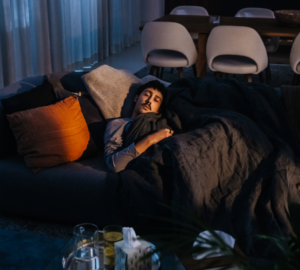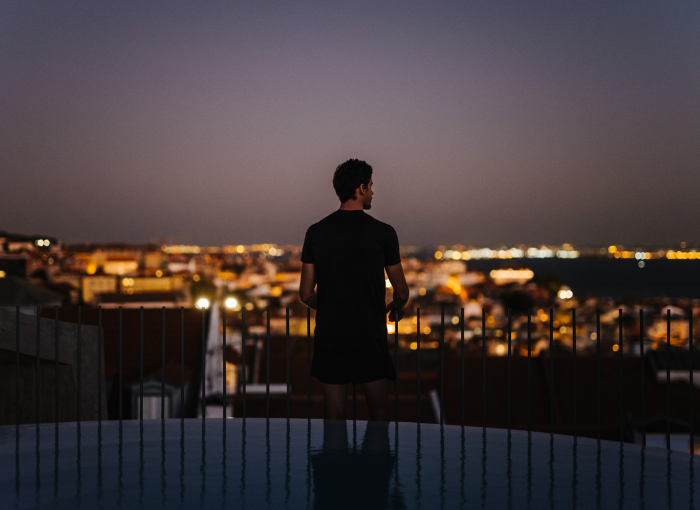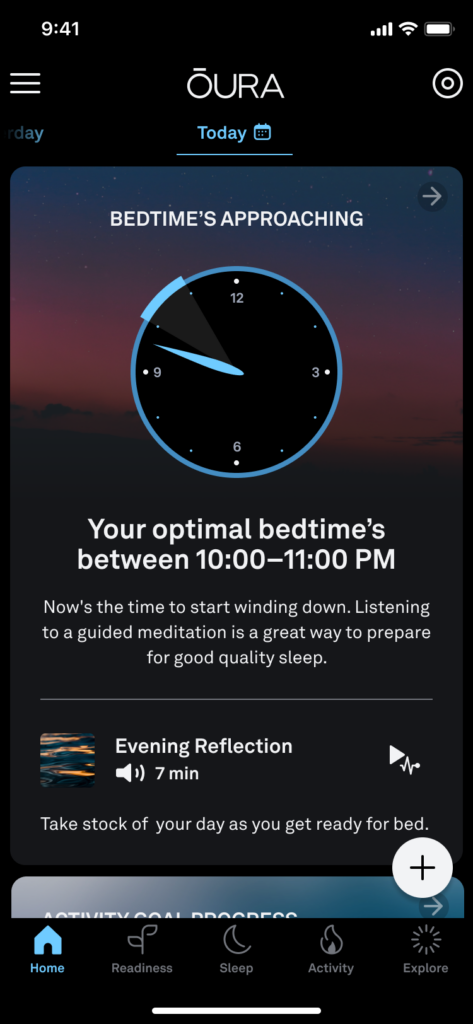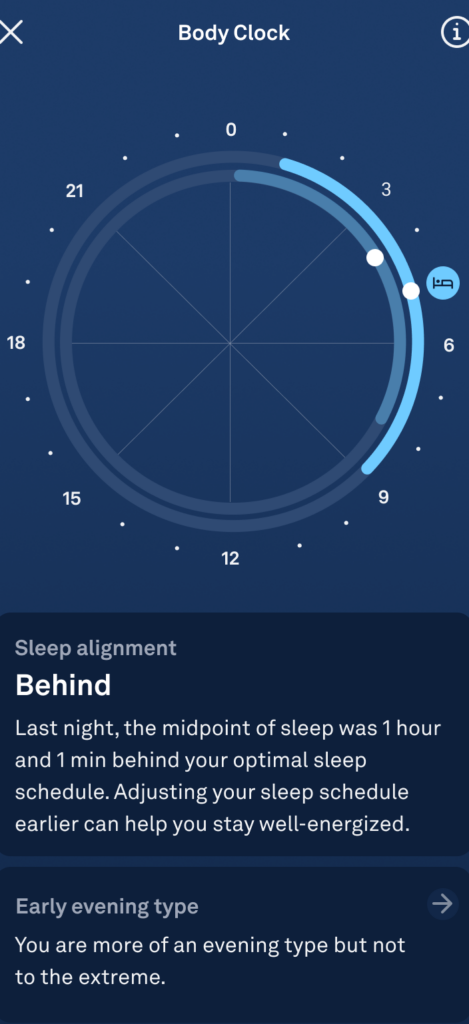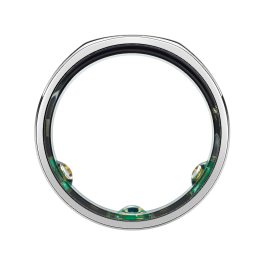- About 35% of Oura members have an evening chronotype (early evening, evening, or late evening on Oura), meaning you tend to feel energized in the latter half of the day.
- Night owls may experience challenges due to cultural norms around morning hours, which is why it’s vital to optimize your most productive hours.
- In the Oura App, evening chronotypes are categorized into early evening, evening, and late evening chronotypes. Oura members discover their personal chronotype after 90 days of consistently using Oura.
While considered the less common chronotype, “night owls” make up a portion of the population — and about 35% of Oura members. They are people who thrive when the sun goes down, and prefer to sleep in.
Your chronotype relates to your diurnal preference, which is the expression of your internal biological clock — your circadian rhythm. In other words, your chronotype reflects your natural inclination for morning or evening activities. Understanding your chronotype can help you create daily routines that are aligned with your innate propensity for sleep, work, and more.
| Member Tip: Not sure of your chronotype? Oura members receive their chronotype information, categorized into six different types, after using Oura consistently for 90 days. |
LEARN MORE: What Is Your Chronotype & Why Does It Matter?
The “Night Owl” Chronotype: Early Evening, Evening, or Late Evening
If you have discovered that your Oura chronotype is early evening, evening, or late evening, you’re a night owl.
While not fully conclusive, research has found that evening chronotypes, in comparison to morning chronotypes, tend to be:
The downside of this chronotype: The proclivity for nighttime can be problematic in a world that primarily operates during the daytime. Furthermore, studies have found correlations between evening chronotypes and smoking, greater alcohol use, unhealthier diets, reduced academic performance, and an increased risk of mortality.
But note that correlation doesn’t necessarily mean causation. There are many factors, such as stress levels, nutrition, and your general health status, that can impact the likelihood of these outcomes.
Who Is More Likely to Have an Evening Chronotype
Among Oura members, around 35% have an evening chronotype. Studies that have measured eveningness at a population level found between 10 and 24% of the population can be classified as natural night owls. (Discrepancies between these figures may reflect issues with self-reported data, which was the technique used in the research). But it’s not distributed evenly among age groups.
It’s more common for adolescents to have an evening chronotype than any other age group. That explains the stereotype of teenagers sleeping in! We see this reflected in the Oura community – 70% of Oura members aged 25 or younger are considered evening chronotypes. This percentage diminishes with age.
Your Ideal Schedule
Sleep
Aim to: Go to bed as early as your chronotype allows, typically between 11pm and 1am. Try to wake up between 8 and 9am, though this may not be possible for all people.
Evening chronotypes get a “second wind” in the evening, in terms of your energy levels and creative ideas. Oura members can find specific sleep and wake time recommendations in the Body Clock section on the Oura App.
Due to a late bedtime and morning responsibilities, evening types build up a larger daily sleep debt and are more sleepy in the morning. This sleep debt, over time, can cause persistent daytime tiredness, regardless of sleep duration the prior night.
If you have early morning responsibilities and aren’t able to sleep in line with your ideal body clock, it’s vital that you help your body wind down in the evening. For instance drinking a hot herbal tea, turning off screens and bright lights, and taking a warm bath can trigger melatonin release and signal to your body that it’s time for bed.
| Member Tip:After discovering her evening chronotype through Oura, Jonna aligned her daily schedule with her natural body clock, resulting in more energy and less morning grogginess. This adjustment allowed her to embrace her optimal productivity hours and let go of the pressure to be a morning person. |
Productivity
Aim to: Tackle the bulk of your work in the latter half of the day, which can be anywhere between 3 and 11pm, depending on the flexibility of your job.
Evening chronotypes tend to perform better, mentally and physically, later in the day. Research supports this for students as well: One study found that evening chronotypes perform better in afternoon exams than in morning exams.
A 2022 study looked at sleep and mental health among employees who worked from home during the Covid-19 pandemic. The researchers found that evening chronotypes, who had new-found flexibility in their schedule, no longer experienced issues with sleep, and their rates of depression declined.
We know that this isn’t always possible, however, so for those of us who maintain normal business hours, try:
- To get morning sunlight to trigger the cortisol awakening response and help your mind wake up.
- Get some movement in the morning.
- Eat a breakfast containing complex carbohydrates which steadily increase your blood sugar for sustained energy.
- Have some coffee early in the day to avoid impacts on your sleep.
Exercise
Aim to: Workout early in the day to boost morning alertness. To maximize strength and physical performance, aim to exercise later in the day when your energy is naturally highest.
Evening types have better athletic capacity and performance when exercising in the evening. Specifically, they have higher VO2 max values (a measure of cardiorespiratory fitness), higher cortical excitability (increased reaction time and motor function), and higher torque (crucial for generating strength and power in exercise).
However, when you do high-intensity workouts in the evening, cortisol and adrenaline are released and the sympathetic “fight or flight” nervous system is activated. This can exacerbate your evening alertness and further inhibit sleep. So aim to avoid high-intensity exercise two to four hours before bedtime.
If you care less about performance and more about daytime alertness, a morning workout is the way to go. Morning exercise can increase focus, cognitive performance, decision-making, and boost your mood. It can also help you sleep better at night!
Sample Schedule for Evening Chronotypes
Depending on your daily responsibilities, or whether you’re an early evening, evening, or late evening type, these times may be shifted slightly, but here’s a good place to start:
8 – 9am: Wake up
9 – 10am: Eat breakfast, drink coffee, and get morning sunlight
10 – 2pm: Focus on lighter tasks
2 – 3pm: Work out
3 – 9pm: Focus on deep work
9 – 10pm: Unwind and signal your body it’s time for sleep
11pm: Go to sleep
Harness the Power of the Evening with Oura
It can be difficult to find your balance as an evening person in a diurnal world. With Oura, you’ll get notified when it’s time to start winding down for bed, and you’ll receive personalized bedtime guidance based on your chronotype. This can help you create a daily routine that allows you to feel and perform at your best.
| Member Tip: Using Oura, you can also log certain habits like caffeine, a bright bedroom, meditation, and more, so that you’re able to see how they affect your sleep and energy levels throughout the day. These effects will be evident in your Sleep and Readiness Scores. |
RELATED: How to Structure Your Ideal Day as a Morning Chronotype



